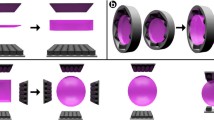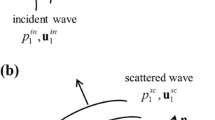Abstract
The techniques of acoustic positioning without the use of resonant cavities have been explored and developed over a number of years and the currently available capabilities are reviewed. The performance and characteristics of these nonresonant acoustic systems are described in regard to containerless processing with emphasis on the low-g environment. This includes manipulation and mixing of liquid drops, super-cooling phenomena, heating to temperatures of 1600° C or higher, rapid cooling solidification, and surface shape control. Some possible applications are measurements of physical properties of substances at high temperatures or of highly reactive specimens, and the formation of unique glasses and alloys of new compositions.
Similar content being viewed by others
References
R. Whymark, C. Rey, J. Yearnd and R. Broz, “Acoustic Levitation Materials Processing Systems” AIAA 17th Aerospace Sciences Meeting
Patent No. 4,284,403
“Mathematical Model of the Sound Field Distribution in the Interference Levitator,” TASK III NASA Contract NAS8-32820, L. Gardner, Technical Monitor, MSFC, Alabama
Patent No. 4,218,921, William A. Oran et al.
Author information
Authors and Affiliations
Rights and permissions
About this article
Cite this article
Rey, C.A., Whymark, R.R., Danley, T.J. et al. Present and Future Capabilities of Acoustic Levitation and Positioning Devices. MRS Online Proceedings Library 9, 137–146 (1981). https://doi.org/10.1557/PROC-9-137
Published:
Issue Date:
DOI: https://doi.org/10.1557/PROC-9-137




